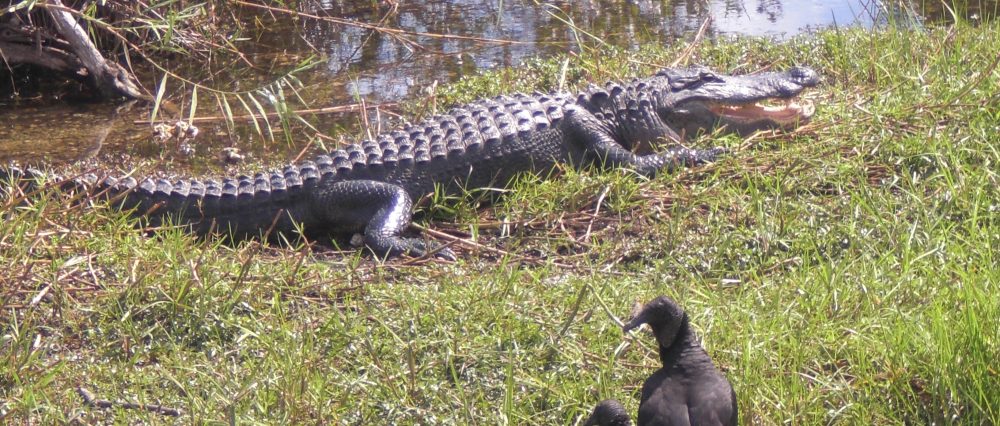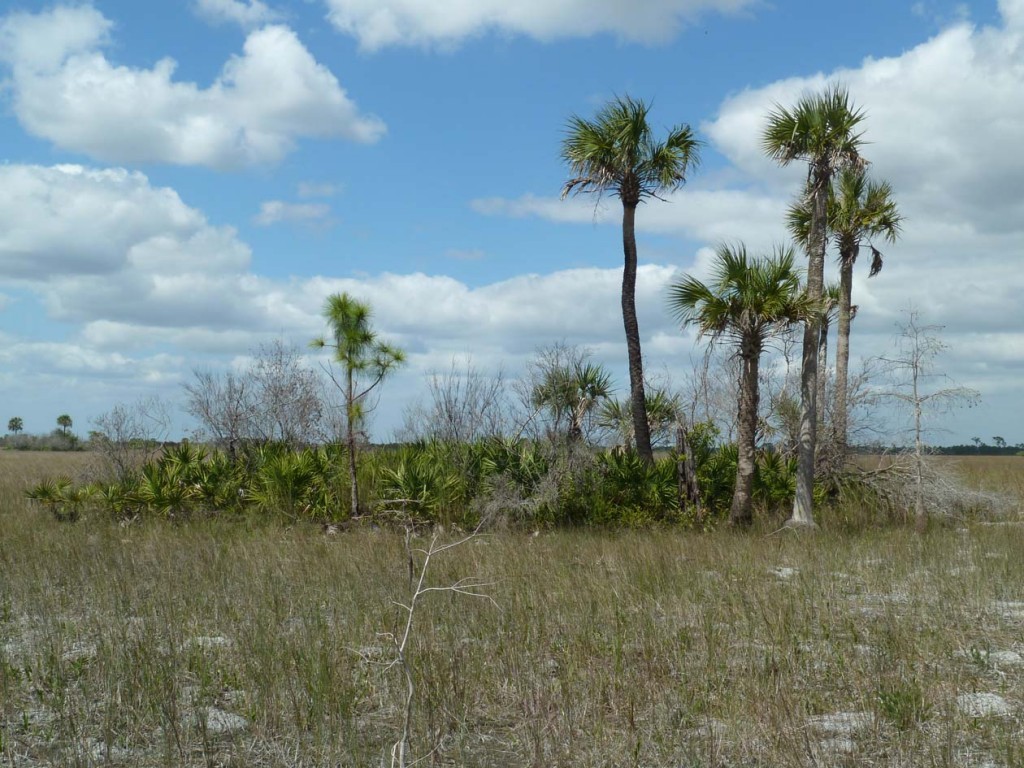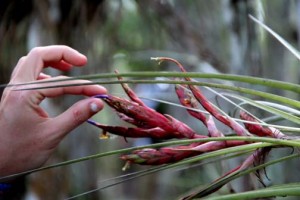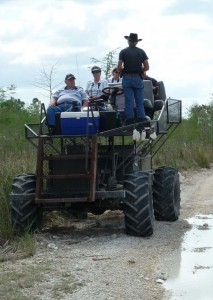A national preserve that offers far more than what first appears
By Caitie Parmelee
Eleanor Hodak, a ranger at the Big Cypress National Preserve, was leading a group of visitors on a hike into a sawgrass prairie. There were green cypress and palm trees breaking the flatness of the land, but the ground was brown and dusty. A white-tailed deer pranced in the distance.
“The highest point in the preserve is 22 feet,” said Hodak. “Mere inches can really change how much water stays around during the dry season and what kind of things can live there.”
“The water down here in southern Florida is absolutely everything,” Hodak said.
Big Cypress National Preserve, located east of Naples, Fla., was formed in 1974 to protect the land from development, and to protect the watershed in particular. The creation of the preserve was a result of a legal battle over the possible construction of an airport, the plans for which were already underway when a campaign was created to include Big Cypress in the National Parks system. After political support swayed towards support for the environmental campaign, President Richard Nixon agreed to make Big Cypress the first national preserve in the United States.
As a preserve, there are certain activities that are allowed that would not be permitted in a national park. These include hunting and fishing, oil and gas exploration in designated areas, and families who are able to maintain the ownership of their homes in Big Cypress if they owned the property before it became federally-protected land. The use of off road vehicles is also allowed.
When the visitors entered the trail, they had noticed a sign that read, “The Future of These Trails Depends on You. Stop Off Trail Use.” Hodak explained that as of July, 2011, the use of off road vehicles in the preserve was restricted to designated trails.
According to Bob DeGross, chief of interpretation at the preserve, the new restrictions are the result of a settlement from a lawsuit filed in the late 1990s about damages the preserve was sustaining from the vehicles.
“This move was made, as it has been nationwide, due to the impact that off road vehicles have on soils, vegetation and other natural features,” DeGross said.
Environmentalists said the vehicles dug ruts into the ground, damaged plant and animal habitats and upset the water flow in the preserve. Big Cypress, they said, which is also home to the endangered Florida panther, has a fragile ecosystem, which needs to be protected.
Back on the sawgrass prairie, Hodak pointed to a cluster of palm trees and bushes. She explained how the density of the trees would make a good den for a panther, an animal which is endangered but rarely seen and closely monitored by wildlife experts at the preserve.
As the group continued walking, Hodak said “In a really short period, we’re going to get three very different habitats.” The visitors then walked into the second zone, a cypress stand. Within moments of entering, they were ankle deep in water and surrounded by towering cypress trees. The difference in the elevation of the landscape was inches.
They strolled through the water, listening as Hodak pointed out pink air plants growing on trees and a white ibis sitting in the branches. When she wasn’t speaking, everything was quiet except for the sounds of birds. It was a secluded and peaceful environment.
To settle the lawsuit, the National Park Service agreed to create a management plan for the use of off road vehicles.
“Prior to the change, those [who] explored the preserve using off road vehicles could travel almost anywhere that the vehicle could go. Now access is restricted to about 430 miles of designated primary and secondary trails,” DeGross said.
If caught off trail, the user of an off road vehicle will receive a fine and have his permit to operate the vehicle within the preserve revoked for one year. DeGross has found that while some people are unhappy with the new regulations, most are willing to comply.
“It is a ‘new’ concept that many grumble about,” he said. “But they understand why it was enacted.”
The hike ended as the visitors exited the stand into the pinelands, where the trees were thick and the ground was dry. As they were leaving the trail, they saw a swamp buggy sitting on the road with a group of tourists. The vehicle was large and looked like a tractor with elevated seats for guests. Hodak explained that if visitors wanted a backcountry tour of the preserve, they could go out on one of these swamp buggies with a guide.
“As long as the things that we do and the things that we allow to happen out here in the preserve don’t impact that watershed,” said Hodak, “it’s good to go.”




